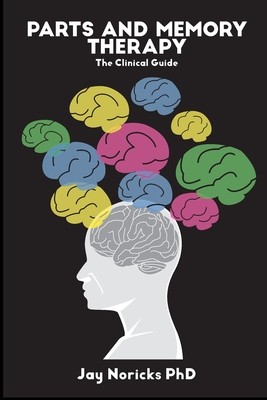
- We will send in 10–14 business days.
- Author: Jay Noricks
- Publisher: New University Press LLC
- ISBN-10: 0996929118
- ISBN-13: 9780996929110
- Format: 15.2 x 22.9 x 1.1 cm, softcover
- Language: English
- SAVE -10% with code: EXTRA
Reviews
Description
This book provides a clinical guide for psychotherapists and counselors in the use of Parts and Memory Therapy (P&MT) to treat emotional or psychological problems. Additionally, the book aims to present a clear and compelling narrative for lay persons who wish to know about the latest cutting-edge developments in psychotherapy. For both audiences, this clinician's guide provides a brief introduction to the basic P&MT concepts, tools, and techniques. They are the foundation for the treatment protocols that follow in the later chapters of the book.
A "Part" with a capital "P" is the term I use to reference what other scholars call parts, ego states, sides, subpersonalities, voices, self-states, and many more. I will sometimes use the word "subpersonality" or "ego state" in place of "Part" to avoid monotony and also to make specific grammatical issues easier to negotiate. These terms refer to natural subdivisions in what we usually call our personality or our self. The bottom line is that the self or personality is not unitary; it's made up of many Parts...
The Guide describe many other variations in how Parts present themselves. But Parts are only half of the elements need to make P&MT work. The other half is the visualization of change that leads to permanently neutralizing the emotional memories that maintain the problem. Our interventions take advantage of memory reconsolidation, a recently discovered natural neurological process in memory formation and reformation. As utilized in our model, it permits us to neutralize the disturbing emotional memories (such as fear, grief, anger) without changing the factual, autobiographical narrative that lies at the heart of our patients' difficulties. Previously, such emotional memories were thought to be indelible. In the therapy, we confront the wounded Part of the self that carries the pain of the trauma with information or action that contradicts or creates a mismatch with the Part's expectation of continuation of its pain. That neutralizes the memory.
EXTRA 10 % discount with code: EXTRA
The promotion ends in 14d.14:49:15
The discount code is valid when purchasing from 10 €. Discounts do not stack.
- Author: Jay Noricks
- Publisher: New University Press LLC
- ISBN-10: 0996929118
- ISBN-13: 9780996929110
- Format: 15.2 x 22.9 x 1.1 cm, softcover
- Language: English English
This book provides a clinical guide for psychotherapists and counselors in the use of Parts and Memory Therapy (P&MT) to treat emotional or psychological problems. Additionally, the book aims to present a clear and compelling narrative for lay persons who wish to know about the latest cutting-edge developments in psychotherapy. For both audiences, this clinician's guide provides a brief introduction to the basic P&MT concepts, tools, and techniques. They are the foundation for the treatment protocols that follow in the later chapters of the book.
A "Part" with a capital "P" is the term I use to reference what other scholars call parts, ego states, sides, subpersonalities, voices, self-states, and many more. I will sometimes use the word "subpersonality" or "ego state" in place of "Part" to avoid monotony and also to make specific grammatical issues easier to negotiate. These terms refer to natural subdivisions in what we usually call our personality or our self. The bottom line is that the self or personality is not unitary; it's made up of many Parts...
The Guide describe many other variations in how Parts present themselves. But Parts are only half of the elements need to make P&MT work. The other half is the visualization of change that leads to permanently neutralizing the emotional memories that maintain the problem. Our interventions take advantage of memory reconsolidation, a recently discovered natural neurological process in memory formation and reformation. As utilized in our model, it permits us to neutralize the disturbing emotional memories (such as fear, grief, anger) without changing the factual, autobiographical narrative that lies at the heart of our patients' difficulties. Previously, such emotional memories were thought to be indelible. In the therapy, we confront the wounded Part of the self that carries the pain of the trauma with information or action that contradicts or creates a mismatch with the Part's expectation of continuation of its pain. That neutralizes the memory.


Reviews